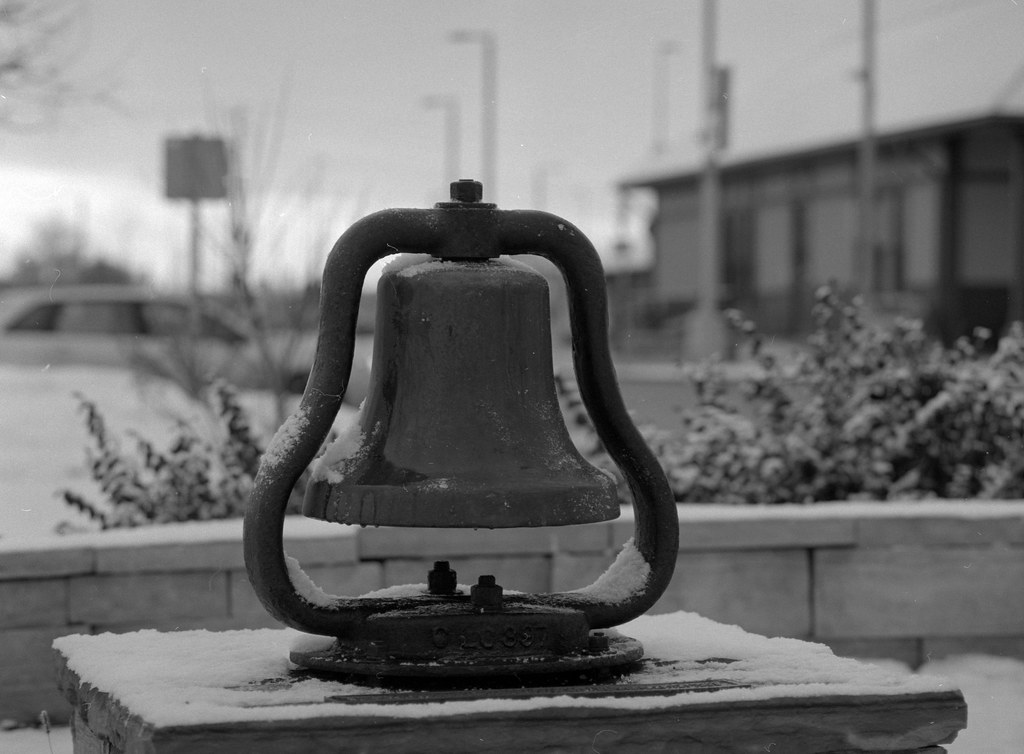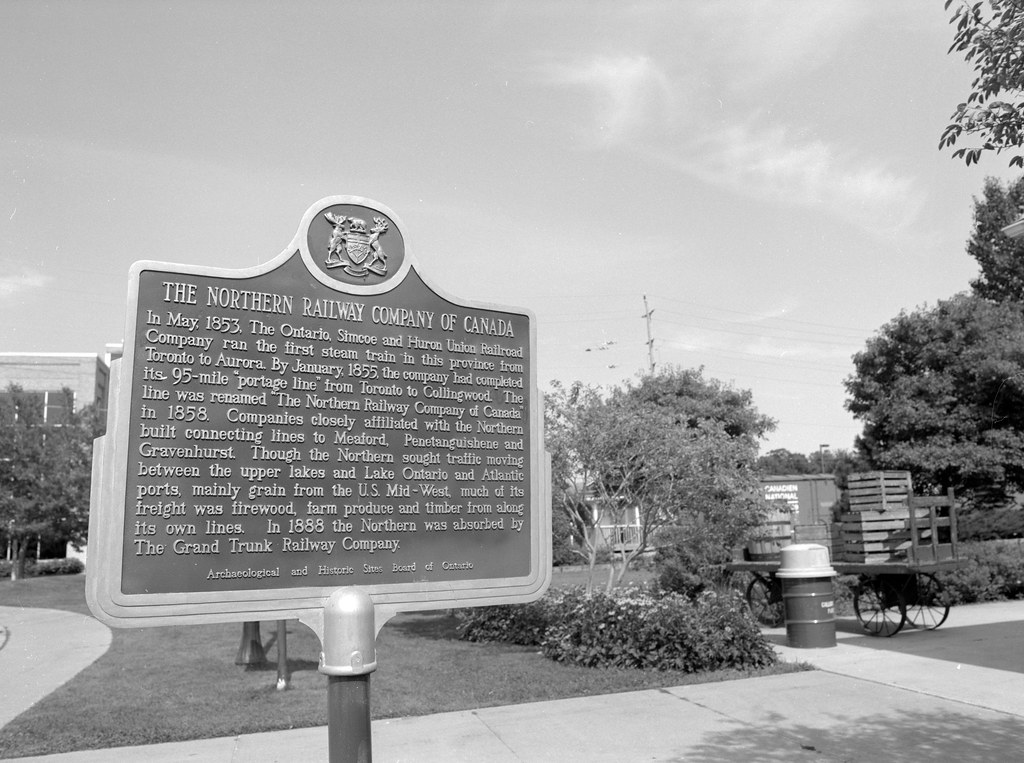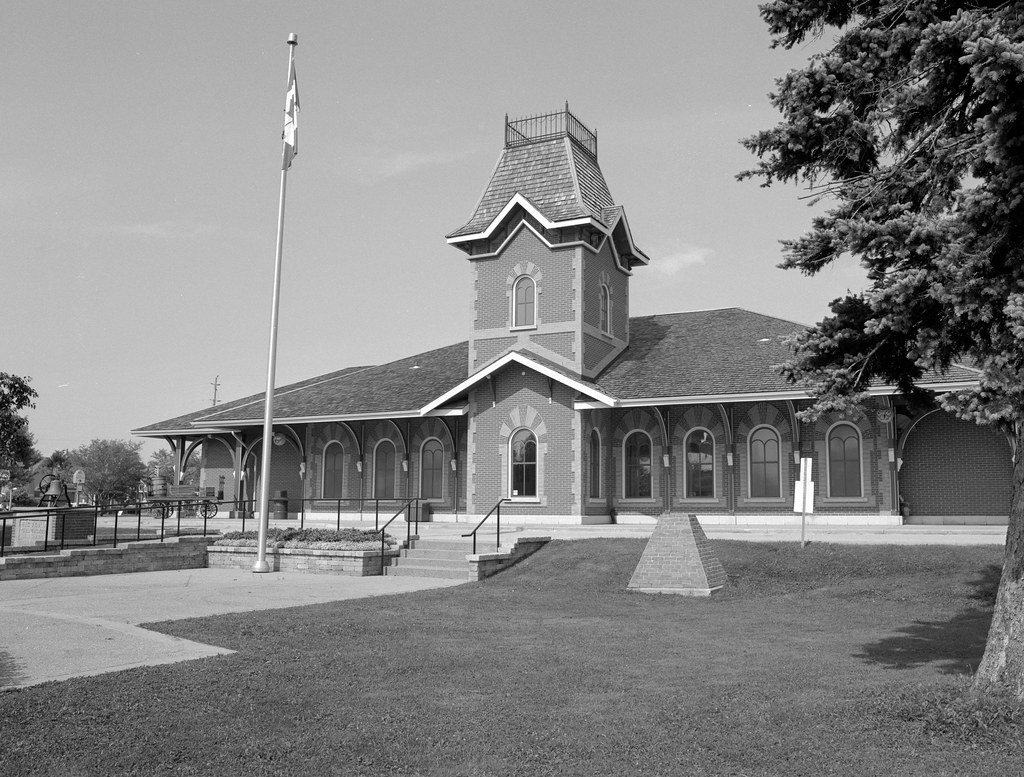If there is a single piece of infrastructure that changed Canada in the early 1850s, the railroad is that single piece the spurred the Province towards a modern industrial location in the British Empire. While the Welland and Rideau Canals provided a fast link they both were tied to the waterways they were built out of. Rail, on the other hand, could cross areas where canals could not. Rail could run nearly the year-round, bridge water, and move faster. But railroads were not new in the province, having existed in some form or another since the early 1820s. Rail technology had been used in the construction of the canals through the use of cable-driven incline railways. A horse-drawn, wooden-tracked railroad was built between Queenston and Niagara Falls in response to the opening of the Welland Canal. The first true steam railroad opened on the 21st of June 1836. The Champlain & Saint Lawrence Railroad ran between Montreal and Vermont, the railroad owed its existence to John Molson as he needed a way to bring in raw materials and export beer. The railroad provided a faster and shorter route to run freight throughout the year, as the St. Lawrence River still froze every winter. With the arrival of self-government in 1849 and the presence of several businessmen in government, the Canadian Parliament recognised the power and wealth the railroad could bring. The government passed two bills, the first being the Railroad Act which granted the power to incorporate railroad companies as well as funding. The Act also granted the corporations powers to raise funds and for towns to also raise funds to aid in the construction through their municipalities. The second, and more important, the Guarantee Act provided the government with the power to bailout failing railroad corporation. The race was on, and three major players were the first to come onboard.

Mamiya m645 – Mamiya-Sekor C 150mm 1:3.5 N – Ilford HP5+ @ ASA-400 – Kodak HC-110 Dil. B 5:00 @ 20C
In 1834 Fredrick Case Capreol began to map out a route that would see a rail line run from Toronto up to Georgian Bay, linking the distant Lake Huron to the urban centre of Upper Canada. But as the political situation unravelled the plan remained just that talk. A decade later Capreol began to promote the idea further, and in 1849 with the passage of the Railroad Act chartered the Toronto, Simcoe, & Huron Railway Corporation. Unlike contemporary railway corporations, Capreol intended to raise funds through a public lottery for startup capital. When word got around Toronto it raised such scandal that Capreol would be disallowed from running the lottery in the city. He would have to raise the startup capital through the usual means of public shares. When Charles Albert Berczy joined the corporation they did a full restart and recharter in 1850 changing the name to Ontario, Simcoe, & Huron Union Railway Corporation (O,S&H). Together they raised enough capital to qualify for government subsidy. And while things looked up and two days before the grand ground turning ceremony Capreol was sacked in 1851. The company not wanting to delay and in the presence of Lady Elgin, wife of the Governor-General turned the first shovel of dirt on the 15th of October 1851, with Sandford Flemming turning the first shovel. Flemming would go onto save that dirt. A grand party went late into the night at St. Lawrence Hall in Toronto with the entertainment provided by P.T. Barnham.

Nikon F6 – AF-S Nikkor 14-24mm 1:2.8G – Kodak Tri-X 400 @ ASA-400 – Kodak D-76 (1+1) 9:45 @ 20C
Construction moved forward in earnest, the charter indicated that the rail line would be built in phases with the first stop being the small settlement of Machell’s Corner. But construction moved slowly, poor weather, poor ground, and winter all contributing to the pace. It took two years to reach the Oak Ridges Morain. But they remained optimistic and chartered the construction of their first locomotive. Unlike Great Western and Grand Trunk who planned to bring their rolling stocks in from England, O,S&H contracted a Toronto first to constructed their locomotives. The Toronto Locomotive Works had been started in 1840 by Irish immigrant James Good. Good’s foundry already specialised in stationary steam engines which drove mills and other industries. The leap to a railroad locomotive proved not too difficult. On the 16th of April 1853, the Toronto was first unveiled to the public and caught the eye of any who passed by the foundries located at Lot (Queen) and Younge in the centre of the city. Even William Lyon MacKenzie could not help but comment on the first Canadian railroad locomotive built on Canadian Soil by Canadian workers. It would take an additional five days of hard manual labour to move the engine from the foundries to the railhead, located at the intersection of Front and Yonge, where the Sony Centre for the Performing Arts is located today. In a grand ceremony, the locomotive along with a few cars steamed north on the 16th of May 1853, the trip took several hours but arrived safely in Machell’s Corners, today Aurora, Ontario. By sheer luck O,S&H became the first operation steam-driven railroad in Canada West. The Toronto Locomotive Works would go on to produce eight engines from O,S&H and eight for Grand Trunk. By June the line had extended another 17 kilometres to Bradford and another 35 kilometres in October reaching the village of Allandale, much to the annoyance of the citizens of Barrie.

Mamiya m645 – Mamiya-Sekor C 45mm 1:2.8 N – Ilford HP5+ @ ASA-400 – Kodak HC-110 Dil. B 5:00 @ 20C
It wouldn’t be until 1855 that the railroad reached its final goal of Georgian Bay. The arrival promoted the start of a small settlement that would by 1858 be incorporated as the town of Collingwood. The main source of income of these early railroads remained in the hauling of freight, and the O,S&H earned the nickname of Oats, Straw, and Hay. And despite the rough start, the company began to turn a small profit. It also helped that O,S&H had very little competition. But soon expansion and ongoing maintenance along with fluctuating cargo fees sent the company into financial difficulties in the late 1850s. The shareholders clamoured for a return on their investments and a new manager, Fredrick William Cumberland promised just that when he took the helm. Under Cumberland, the corporation rechartered again under the name Northern Railway Company of Canada (NRC). Cumberland proved his worth and in 1863 the company was again turning a profit and held up as one of the best-managed railway companies in Canada. But the lack of competition had stagnated the company to the point where they didn’t even consider expansion. Proof of that came when Grey and Bruce approached NRC to construct a branch line from Collingwood to Owen Sound. When Cumberland refused, the communities welcomed aboard NRC’s first direct competitor, the Toronto, Grey, & Bruce Railroad (T,G, & B). Cumberland refused on the reason that such a line would not begin to turn a profit until five years of operation. But they needed to expand.

Mamiya m645 – Mamiya-Sekor C 45mm 1:2.8 N – Ilford FP4+ @ ASA-100 – Kodak D-23 (Stock) 6:00 @ 20C
And expand they did in the late 1860s began work on their Muskoka Branch which saw a rail connection from the Allandale Station in through Barrie before heading north through Orillia and eventually reaching Gravenhurst. The second branch, the North Grey saw construction between 1871-2 which drove the line to Meaford, there had been plans to continue onto Owen Sound but they never materialised. By 1878 a second rail line arrived in Collingwood. The Hamilton & North-Western Railway had come north from Hamilton through Georgetown in 1876, through Allandale a year later and finally reached Collingwood. Both companies realised that if they intended to reach North Bay and the Canadian Pacific Line that was running a link across Canada they had to work together and agreed to merge into the North & North-Western Railroad (N&NW). It was a merger of convenience and necessity and far from cordial. It also provided enough cash to begin the long process of regauging to American Standard in 1881. The line would arrive in North Bay in 1886. But the push north had stripped the company’s cash reserved and Grand Trunk purchased N&NW in 1888, operating the lines until their own demised and absorption into Canadian National in 1923. Other sections of the Hamilton & North-Western network were absorbed into Canadian Pacific. Canadian National adjusted the routing of the original Toronto to Collingwood line, switching the mainline out from Allandale through Barrie, Orillia, Gravenhurst and North Bay as their Newmarket Subdivision. But began the process of pulling up tracks from 1967 to 1980. Today the only two sections of the original route remain. The track from Toronto to Allandale operates under Metrolinx for GO Trains. Canadian National operates the track from Longford to North Bay.

Mamiya m645 – Mamiya-Sekor C 45mm 1:2.8 N – Ilford FP4+ @ ASA-100 – Kodak D-23 (Stock) 6:00 @ 20C
Despite being gone from 1888, there is still plenty remains of the NRC. The original Aurora, Ontario station saw replacement in 1900 by Grand Trunk and remains active today as a GO Station operating on the original NRC route. A locomotive bell was placed there alongside a plaque in 1963 to celebrate that first steam train arrival in 1853. I found references to a similar plaque at Toronto’s Union Station but I was never able to locate the plaque. The Collingwood Museum is a 1997 replica of the 1873 NRC Station. The original station constructed in 1855 burned down in 1873, a second station was built and survived until a second fire 1932. Canadian National then repaired and expanded the second station, but when it shut down in 1960, the fire combined with neglect required the demolition of the station in 1997, the current museum is built from the original 1873 plans. The original Allandale station is long gone, however, the original foundations were discovered during the restoration of the handsome Prairie Style station that saw completion in 1904, operations ceased in 1980, and they operated briefly as a GO Station from 1990-6, a new station now operates nearby while restoration of the Grand Trunk station continues. Today only two original NRC stations survive. King City Station operated continuously from 1853 to 1967. Black Creek Pioneer Village originally expressed interest in purchasing the station for their museum, but local interest allowed the station to stay and now is a part of the King Heritage & Cultural Centre in 1989. The second surviving station dates to 1880 on land donated to the railway by Sandford Flemming, Craigleath Station operated until 1967 and then became home to the Depot Restaurant until 2001. Today it operates as a local cultural, museum, as the Craigleath Heritage Depot. The only other remains of an NRC station is on the welcome signs for the village of Wyevale that once graced the village’s station. Thankfully there is a large collection of photos online that provide a visual record of many of the stations that are long demolished. While the smallest of the original three, the Northern Railway Company of Canada saw induction into the North American Railroad Hall of Fame in 2010.